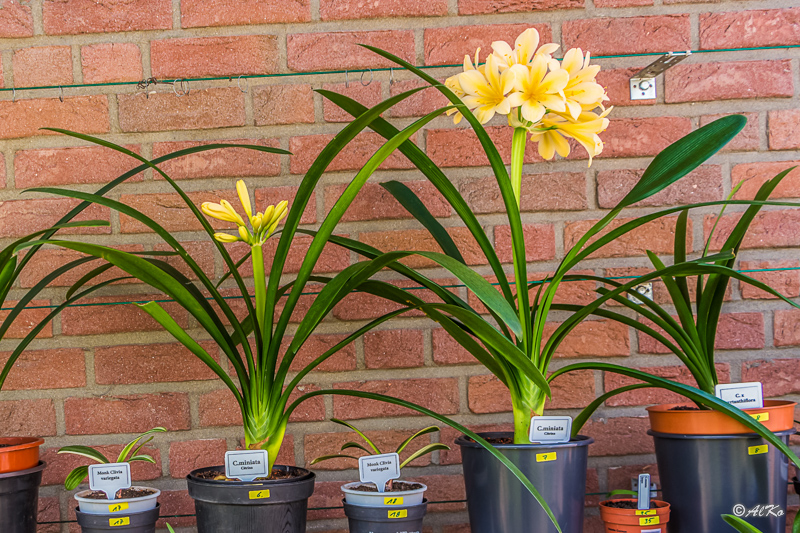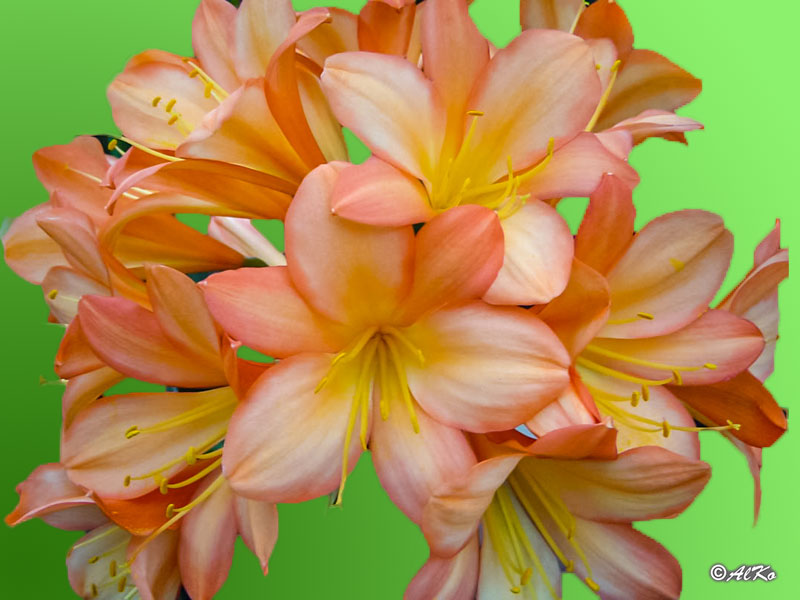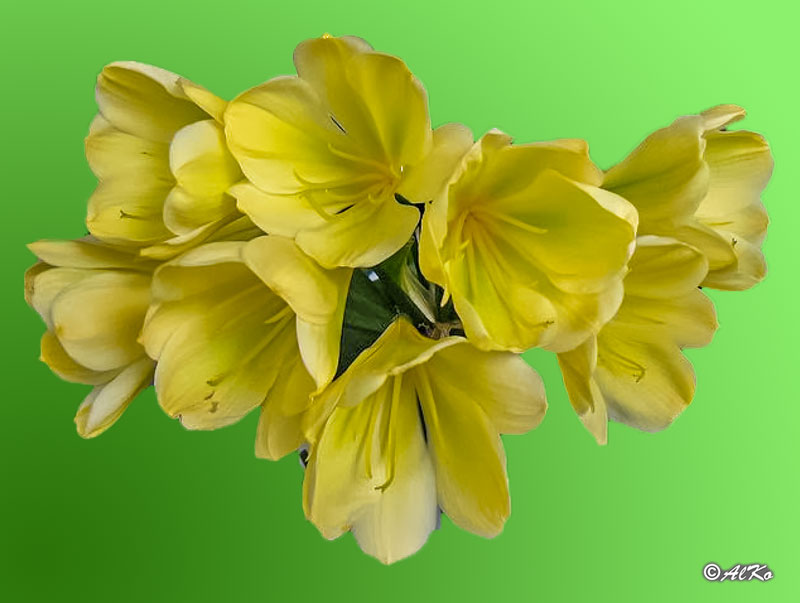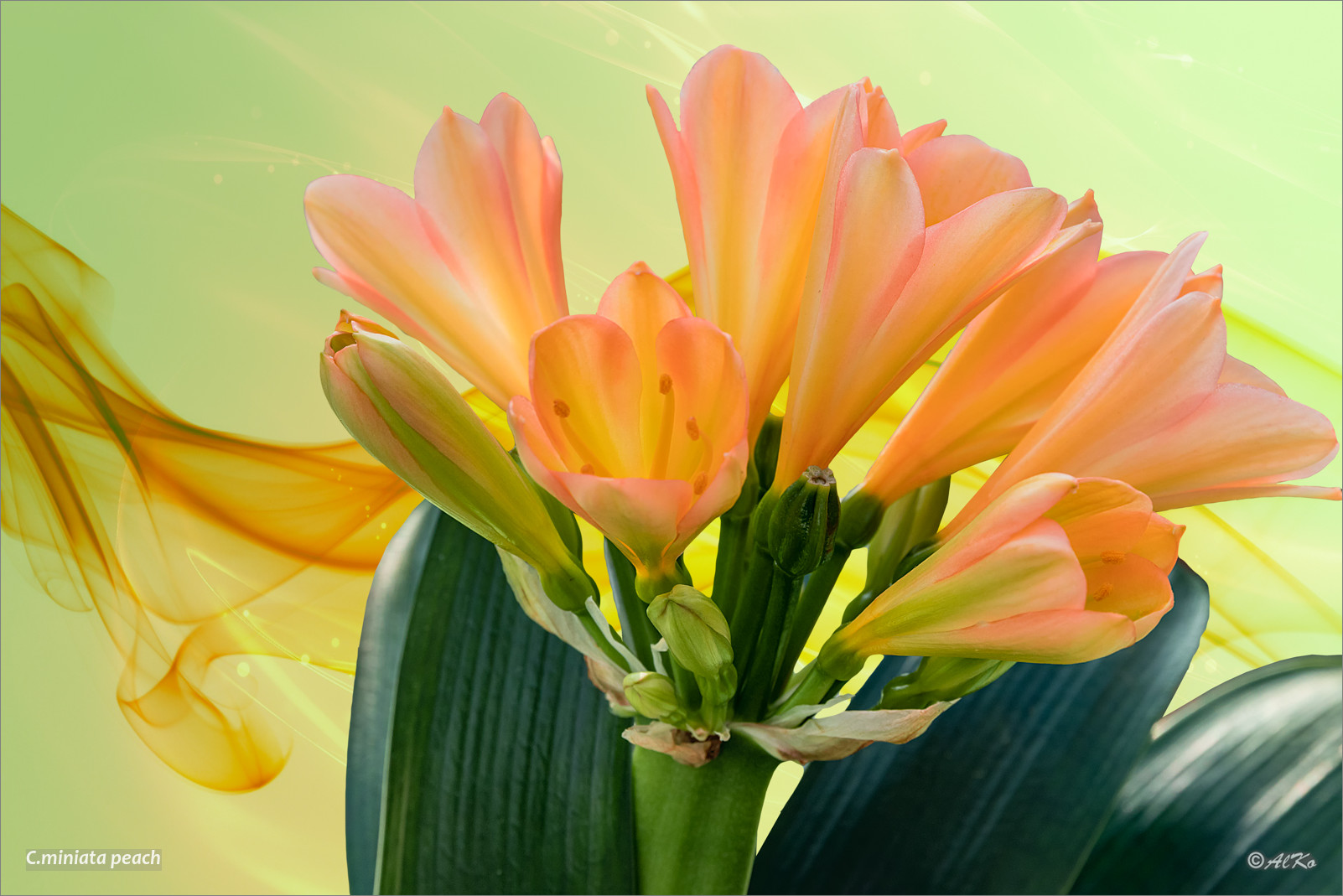
The orange-flowering clivias are generally widespread in our latitudes. Few people know the true variety of colours of these plants. Apart from the slowly establishing yellow-flowered plants, industrious breeders have created a wide range of colour variations (green, apricot, peach, pink, etc.).
Unfortunately, however, in many cases the origin can no longer be traced due to lack of documentation and uncontrolled propagation. As a result, some propagators were astonished that the crossing of two yellow plants produced only orange-coloured offspring.

It was previously known that there are 2 yellow groups. If you cross plants from group 1 with plants from group 2, you get 100% yellow plants, and if you cross plants from group 1 with plants from group 2, you get orange-coloured plants. It is therefore a lottery game for an enthusiast without concrete knowledge of the origin of the plants. These statements also apply to peach-coloured, pink and pastel-coloured plants. In the case of yellow-coloured plants, however, it is already known that they differ in more than the 2 groups. At least a 3rd group has been genetically proven. How many are there really?

Another very interesting fact is that the fruits of yellow-flowering plants look yellow and only these produce yellow offspring. This is a misconception, as has been proven by breeders in China. It has been proven that there are plants with red fruits that produce yellow-flowering offspring. Due to the diversity of crosses, it is no longer so easy to catalogue them. It is still considered certain that seedlings with a colourless base produce yellow flowering plants (also green, apricot, peach, pink etc.). It is not possible to say exactly which of the light colours will develop without knowing the exact origin. It is not true that orange plants always develop from seedlings with a coloured base. Here, too, it is essential to know the origin of the plants.

However, this is not intended to be a scientific treatise. Interested clivia lovers should only be shown the variety of possibilities in propagation and their consequences. If you want to acquire extensive knowledge, you should visit breeders' websites such as: (http://www.cliviasa.co.za). There you can read very detailed treatises on this subject and new findings from professional breeders are published.









